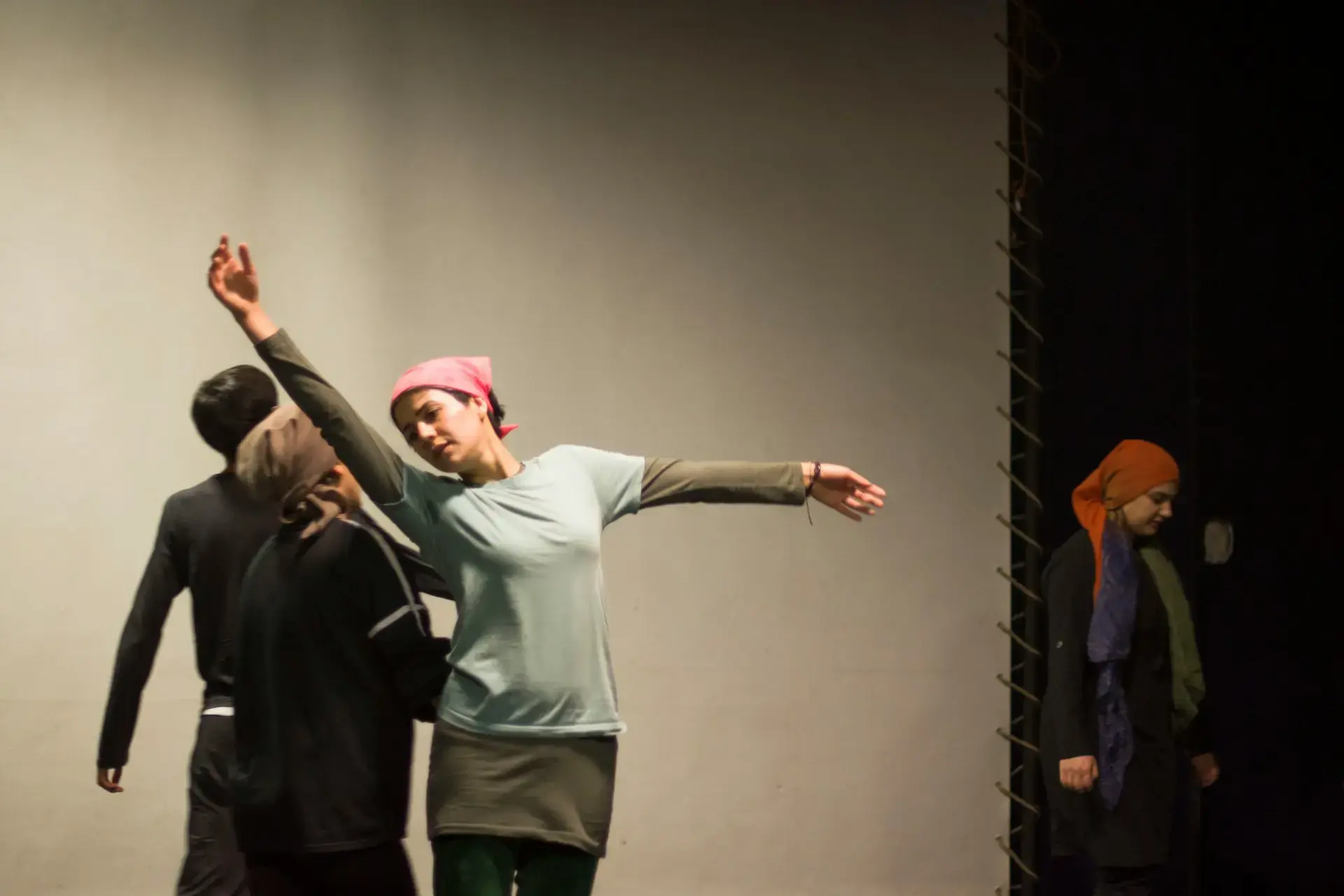Opening Scene
Imagine a rain-drenched field at dawn.
A woman stands alone, her face turned to the horizon.
The sound of water, the trembling of leaves, a faint hum of wind — no dialogue, no music.
And yet, your heart stirs.
You feel something deeper than words — a communion between image, sound, and silence.
That moment — that sacred alignment of vision, rhythm, and emotion — is what we call Absolute Cinema.
It is cinema beyond story, beyond entertainment — where film becomes the purest expression of life itself.
A language of images that speaks directly to the soul.

What Is Absolute Cinema?
At its core, Absolute Cinema is the art of expressing truth through pure visual and temporal form — a kind of filmmaking that relies not on dialogue or narrative mechanics, but on image, rhythm, movement, silence, and time.
It is cinema stripped to its essence — the interplay between light and shadow, space and stillness, presence and absence.
The term “Absolute” doesn’t suggest perfection, but purity — the unfiltered communication of emotion through the audiovisual experience itself. Where conventional films tell stories, Absolute Cinema reveals life.
The Philosophy Behind It
To understand Absolute Cinema, imagine painting without words.
Every frame becomes a brushstroke, every sound a note of feeling.
It’s not about what happens — but how it feels.
Not about the plot, but the pulse of human existence.
In this sense, Absolute Cinema echoes the language of dreams, where time stretches and dissolves, and meaning arises not from logic but from sensation.
Andrei Tarkovsky, perhaps its most profound philosopher, once wrote:
“The aim of art is to prepare a person for death, to plough and harrow his soul, rendering it capable of turning to good.”
For Tarkovsky, cinema wasn’t just storytelling — it was sculpting in time.
How Absolute Cinema Transcends Storytelling
Most modern films are driven by narrative — by the need to keep audiences “hooked.” But Absolute Cinema resists that impulse. It seeks presence over plot, feeling over formula.
When you watch Robert Bresson’s Pickpocket or Yasujirō Ozu’s Tokyo Story, what moves you is not what happens — but how it happens.
The pauses, the silences, the gaze of a character lingering a second longer than expected — they become revelations.
Cinema as a Sensory Experience
In Absolute Cinema, time is not linear.
It breathes.
Moments linger like echoes — an unspoken connection between the audience and the image.
Think of the slow, ethereal movement in Tarkovsky’s Nostalghia, where a man carries a candle through ruins for minutes on end.
Or Malick’s The Tree of Life, where childhood memories merge with cosmic visions.
These are not scenes to be understood — they are meant to be felt.

The Role of Silence and Rhythm
Silence in Absolute Cinema is not emptiness — it’s a vast emotional space.
It allows the audience to enter the image, to hear their own thoughts in the pauses.
Rhythm, too, becomes musical — not dictated by editing software or tempo maps, but by the breathing of the scene.
In pure cinema, time itself becomes the protagonist.
The Directors Who Defined Pure Cinema
Throughout film history, a handful of directors have pursued the holy grail of visual purity — filmmakers who believed that cinema could express what words could not.
Andrei Tarkovsky (Russia)
Tarkovsky’s films — Mirror, Stalker, Solaris — treat time like a liquid element.
His long takes, slow pans, and reflective pacing transform cinema into a meditative experience.
Every image becomes a spiritual inquiry.
Robert Bresson (France)
Bresson removed the theatrical from cinema.
His “models,” not actors, deliver emotion through gesture and restraint.
In A Man Escaped or Au Hasard Balthazar, he reveals that purity of feeling lies not in expression, but in stillness.
Satyajit Ray (India)
Ray’s Pather Panchali introduced the world to the quiet poetry of everyday life.
His realism was not documentary — it was deeply spiritual.
Ray’s lens transformed Indian villages into metaphors for the human condition.
Ingmar Bergman (Sweden)
Bergman used the face as his landscape.
In films like Persona and The Seventh Seal, he turned cinema into psychological poetry — light and shadow became the language of the soul.
Terrence Malick (USA)
Malick’s cinema flows like nature itself.
His use of light, natural sound, and whispered narration evoke a transcendental rhythm that feels almost religious.
Krzysztof Kieślowski (Poland)
In the Three Colors trilogy, Kieślowski merged philosophy with emotion — his imagery is symbolic, yet deeply human.
Wong Kar-wai (Hong Kong)
Wong’s films, like In the Mood for Love, express love through glances, spaces, and time itself.
His slow-motion shots and lush color palettes make emotion tangible.
Akira Kurosawa (Japan)
Kurosawa combined movement, weather, and moral clarity into visual epic poetry.
In Dreams and Ran, every frame feels choreographed by the wind.
These filmmakers, though from different worlds, share one sacred belief:
That cinema is not about representing life — it is about experiencing it.

Absolute Cinema vs Algorithmic Cinema
| Aspect | Absolute Cinema | Algorithmic Cinema |
| Artistic Intention | Expressive & poetic | Data-driven & predictive |
| Rhythm | Meditative & organic | Fast-paced & optimized |
| Emotion | Deeply felt | Instantly triggered |
| Audience Connection | Reflective & timeless | Addictive & short-lived |
| Purpose | To evoke truth | To sustain engagement |
| Creation Process | Guided by intuition | Guided by analytics |
| Impact | Lasts for decades | Trends for days |
Today’s algorithmic systems — from streaming platforms to social media — have redefined how films are made and consumed.
Content is optimized for engagement rather than expression.
Shots are shortened, emotions are heightened, attention spans are commodified.
But Absolute Cinema refuses to compete in that game.
It whispers where others shout.
It allows the viewer to participate in meaning, not just consume it.
Why Modern Filmmakers Must Return to Purity
In an age of endless scrolling and algorithmic storytelling, the filmmaker’s soul risks being drowned in noise.
Every frame is tested, every second judged by retention metrics.
But art cannot breathe in a spreadsheet.
To create meaning, one must first embrace silence — the silence within oneself.
That is where Absolute Cinema begins.
Modern filmmakers — especially young creators — must rediscover that cinema is not just about making content; it’s about making contact.
With the viewer.
With the world.
With the self.
When we return to visual purity, we return to honesty.
How to Practice Absolute Cinema in Your Work
You don’t need a massive budget or advanced gear to create Absolute Cinema.
You need presence.
You need to see.
Here are some guiding principles:
1. Observe Before You Shoot
Watch the world like a poet.
Notice how light falls on a face, how shadows move with time.
Cinema begins long before the camera rolls.
2. Sculpt with Time
Don’t cut too quickly.
Let moments breathe.
Trust the audience’s patience — or teach them patience through rhythm.
3. Embrace Silence
Remove unnecessary dialogue and music.
Let the ambient world speak — the hum of electricity, the rustle of leaves, the sound of absence.
4. Composition as Meditation
Every frame should have emotional geometry.
Ask: What is the frame feeling? not What is it showing?
5. Use Light as Emotion
Don’t just illuminate — evoke.
Natural light carries truth. Shadows carry mystery.
6. Let Reality Enter the Frame
Don’t over-control.
Allow accidents, imperfections, and chaos.
They are part of life’s rhythm — and therefore part of cinema’s truth.
7. Create from the Soul, Not the Feed
Your art doesn’t need to trend.
It needs to transcend.
The Future of Absolute Cinema in a Digital World
As we step deeper into the AI and streaming era, the paradox of modern filmmaking becomes clear:
Technology gives us infinite tools — but can also erase our human essence.
AI can generate images, compose music, even simulate emotion — but it cannot feel.
Absolute Cinema will survive because it doesn’t rely on quantity or novelty.
It relies on presence — the human ability to see beauty in stillness.
The next generation of filmmakers must learn to use technology as an instrument, not as an identity.
Imagine using AI not to replace creativity, but to free it — to give time back to contemplation, to refine the art of seeing.
In a world that moves faster every day, Absolute Cinema will be the slow revolution — a return to authenticity.

Conclusion: Cinema Beyond the Screen
Absolute Cinema is not a genre or movement — it is a consciousness.
A way of seeing, feeling, and expressing life through the language of time and light.
When you watch a child looking out of a window, a reflection trembling in rainwater, or a shadow stretching across a wall — that is cinema.
Not because a camera captured it, but because your heart did.
To practice Absolute Cinema is to rediscover our capacity for wonder.
It is to remember that film, at its highest form, is not about storytelling —
It is about being.
In a digital age obsessed with speed, Absolute Cinema reminds us that stillness, too, can move us.
That silence can sing.
That truth, when seen purely, can change the way we look at the world.